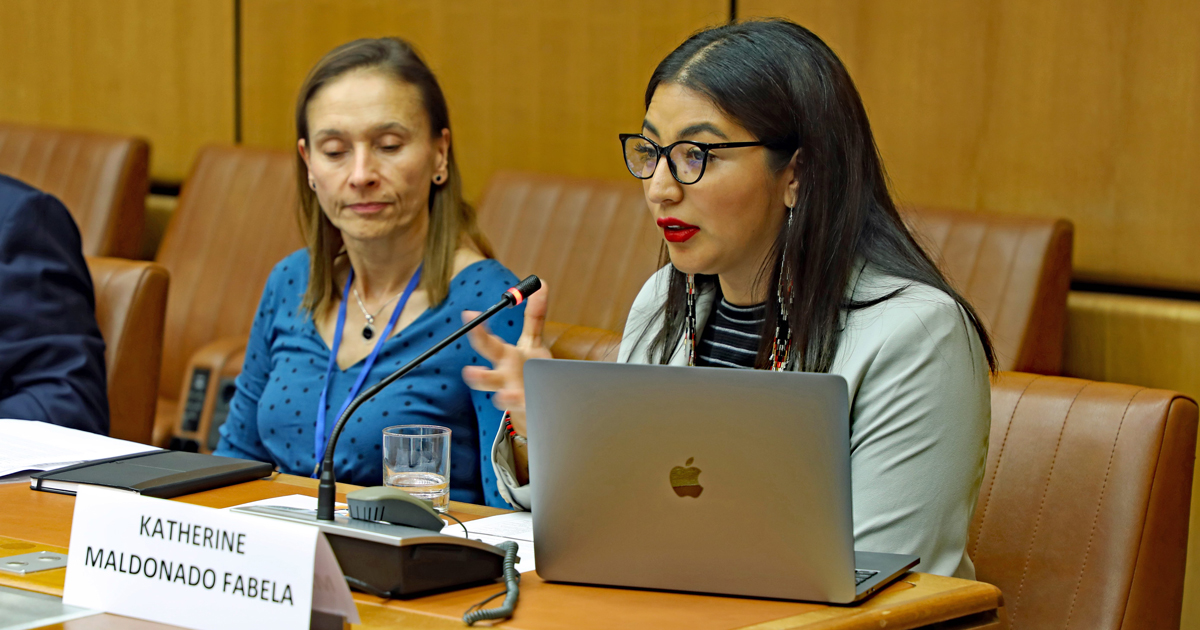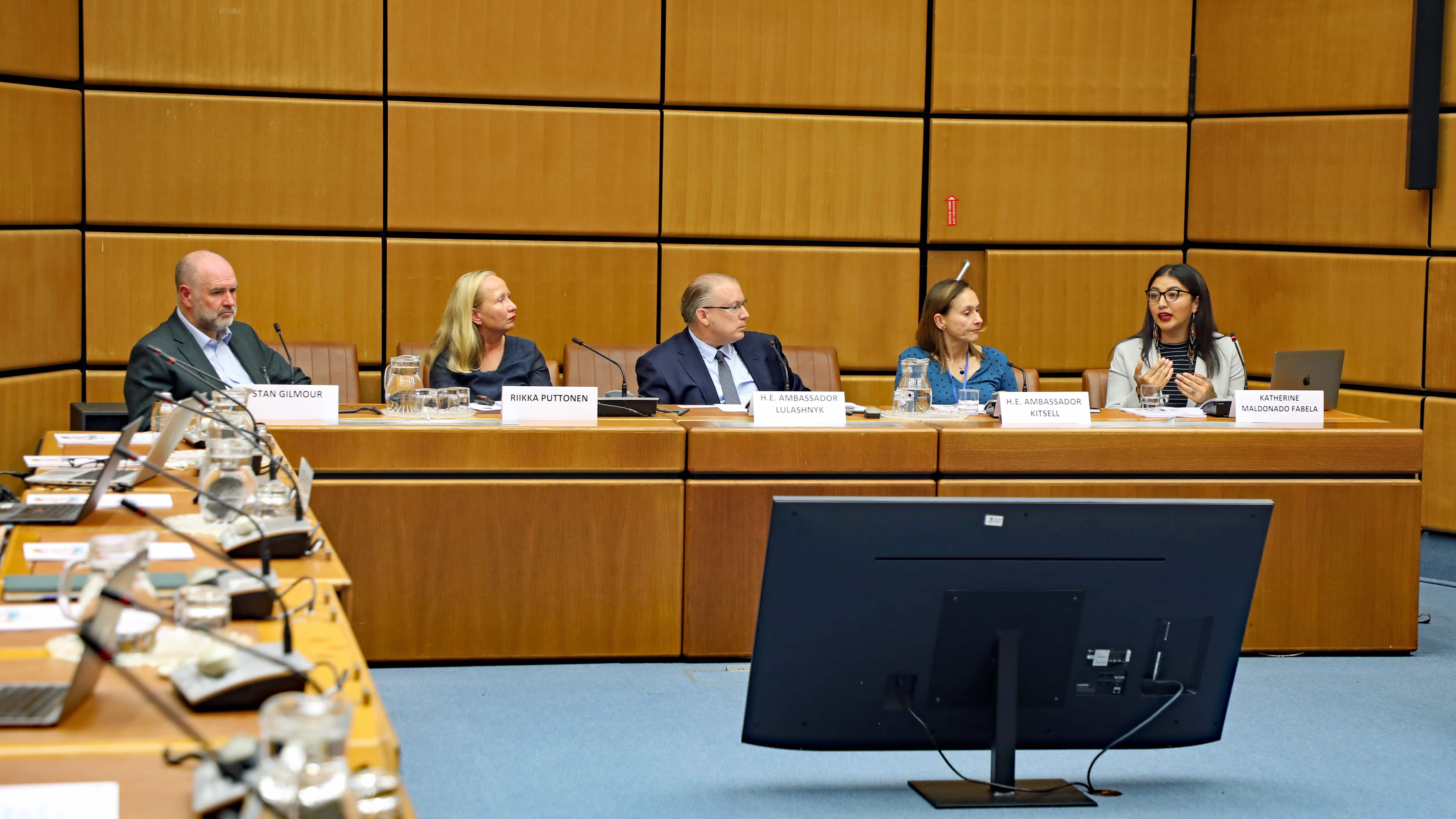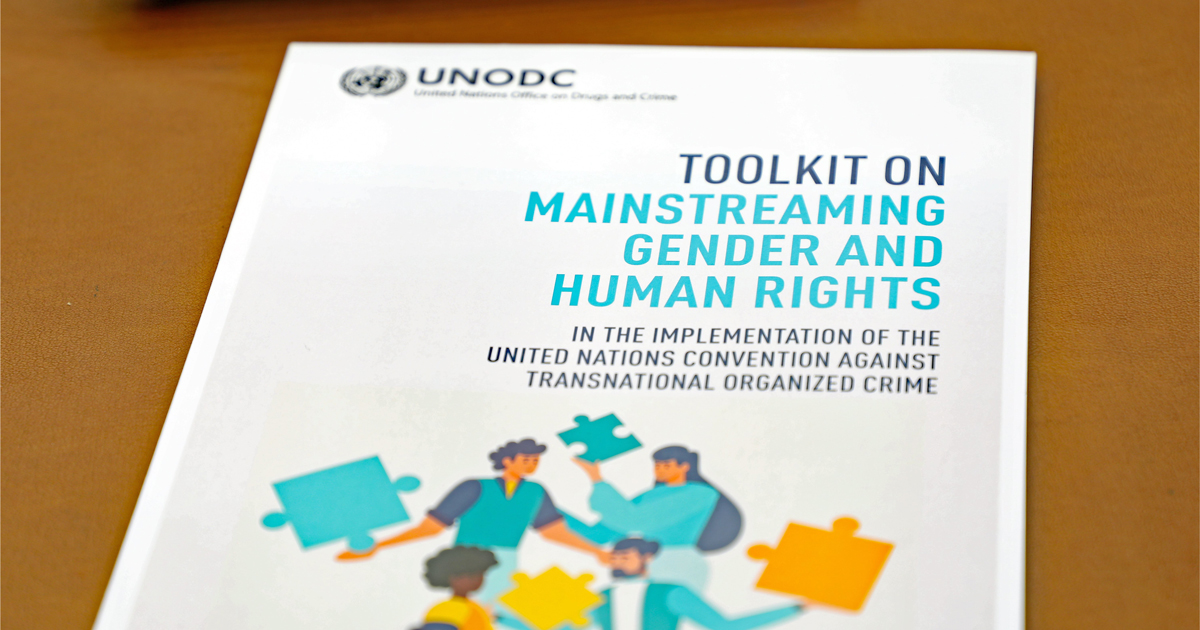
Vienna (Austria), 16 October 2023 - Gender stereotypes pervade all aspects of life, influencing experiences and societies in ways both direct and indirect. The world of transnational organized crime is no exception. All people in contact with the crime are influenced by preconceived biases – consciously or not.
In policies, legislation and practices into which gender has not been mainstreamed, men are often seen predominantly as perpetrators and women as victims, which can lead to impunity or unjust treatment by criminal justice systems.
Meanwhile, gender imbalances in the criminal justice system have an impact on the treatment of accused persons, prisoners, witnesses and victims. Criminal justice institutions cannot provide equal and equitable responses if their workforces are not representative of the broader population.
But how does a lack of gender sensitive approaches impact those actually involved in organized crime? To help answer that question, UNODC sat down with Katherine Maldonado, a researcher at the University of California who examines how women experience gang-related violence. Ms. Maldonado spoke to UNODC after an event launching the new Toolkit on Mainstreaming Gender and Human Rights in the Implementation of the UN Convention on Transnational Organized Crime.
I'm from South Central Los Angeles in California, United States, primarily a black and brown poor community of colour. I was raised by immigrant parents from Central America and Mexico. And so my interest primarily comes from listening to my parents’ stories of migration to escape civil war and my older brother's time in prison.
Being exposed to these stories in my community really allowed me to build questions about what we can do about experiences of criminalization broadly.
For the past decade, I've been working primarily with women and their experiences with violence in gangs. I began by questioning what their aspirations were and why that kind of lifestyle involved a lot of violence. And since then, I've conceptualized different models related to their experiences as both mothers and as members of gangs. Now I'm looking more at the health consequences of gang affiliation.

Working with women in gangs for the past decade has made me aware of the role that mothers play in neighborhood gangs, specifically the ways that they're able to intervene in crimes and navigate violence in the community. Sometimes that entails being there for their children or husbands who are coming out of prison. But they also play a larger role in the community.
For example, one time I interviewed a mom of five. She mentioned how her daughter was entering her teenage years and was being recruited into a gang. She then called her friend who was also a gang member to kind of “scare her off” the streets. It created a little bit of fear in her daughter, who never ended up joining the gang.
This is one of many ways I’ve seen mothers use their social capital – in this case, the mother’s own gang network – to intervene and say “this stops here.”
I think what can be learned is that oftentimes, victims of gang violence don't just see themselves as victims. I'm reminded of a particular story where a mother witnessed one of her friends get killed in front of her. And she talks about how that experience really shifted her life course as a teenager, affecting her mental health. But even after bearing witness to death, they're still engaging with their own agency by trying to navigate survival within that context.
Gender equality and human rights-based approaches are important because they help humanize the backgrounds and experiences of people. What I've seen, especially working with undocumented mothers who are in gang networks, is that they oftentimes are dehumanized because they become so invisible.
I've seen cases where they think: “I can't go to certain institutions for support” or “I'm scared to take my children to this doctor or this other public institution because of certain threats”.
When you implement a gender and human rights approach in policies, women feel a little bit safer to say, “I can actually go to this public institution for support even though I have this affiliation with the gang.” I've seen that over and over with mothers.

I teach gender-related and feminist theory courses at the University of California as well as in community organizations to policy advocates. I want to take this toolkit and disseminate it within my networks. I will also use the exercises that are in the Toolkit with my students, colleagues, and people who are interested in policy change at different levels across California.
I want to conclude by saying that I think awareness-raising is important when working with criminalized women. Who are they? What are their experiences with violence? How did they wind up in a psych ward, for example, or in the streets for substance abuse? Understanding and humanizing those experiences really shifts the way that women are able to seek for help. And that's central to disseminating any toolkit.
Access the Toolkit on Mainstreaming Gender and Human Rights in the implementation of UNTOC here: Toolkit Gender and Human Rights (unodc.org)
This webstory was firstly published on the main website of UNODC.